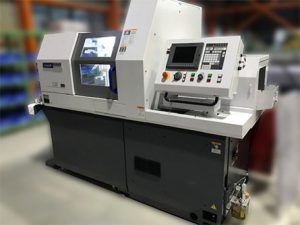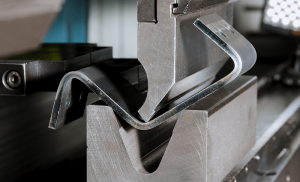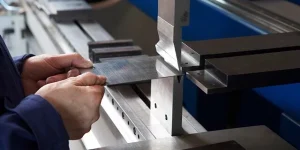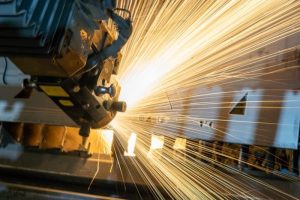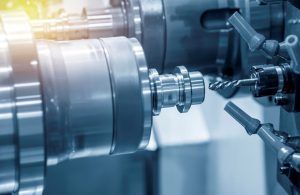CNC machines provide unmatched precision with tolerances as tight as 0.0001 inches, enabling intricate designs, consistent repeatability, and reduced waste, significantly enhancing manufacturing efficiency and quality.
High Accuracy
One of the features that make CNC machines the go-to tools for the manufacturing industry is the ability to ensure extreme levels of accuracy which can sometimes go as far as tolerances of 0.0001 inch. In the aerospace and medical device industries, even the slightest deviations can lead to severe issues in the overall functionality and safety aspects of a product. For instance, when developing airplane parts, entirely precise sections on pieces of titanium are needed to produce the correct fit with other fuselage material components. This will allow the aircraft to function optimally as designed.
Additionally, CNC technologies make it possible to produce highly intricate component parts and ensure that these components have the right measurements without the need for later adjustments. In the realm of dental implant production, only CNC machining can ensure the desired degree of precision for the production of perfect-fitting custom orthopaedic implants. The images of the joints developed with a high-resolution scanner are used as the basic instructions for CNC machines to follow. As a result, the implant will not only support patients through the recovery process due to a perfect fit and lack of discomfort but also guarantee a longer lifecycle since the implant will not be subjected to damaging contact.
CNC machines not only ensure extreme accuracy but also benefit the production process in terms of material efficiency. The machines calculate the most time-efficient and effective material placement and cutting paths. As a result, the machines can optimize the use of materials and assist manufacturers with achieving reduced costs. Automakers use highly expensive materials such as aluminum and carbon fibre in their production lines. Since the materials are of critical importance, they are equally expensive.
However, CNC efficiency in ensuring minimal waste of such materials can reduce the cost of materials significantly. Overall, the final products can add value on the market because they are produced to meet the highest possible standards, with quality materials, and within the shortest period possible. Not only will the products have higher pricing, but the reduced rate of wasted materials will also lead to higher profits.
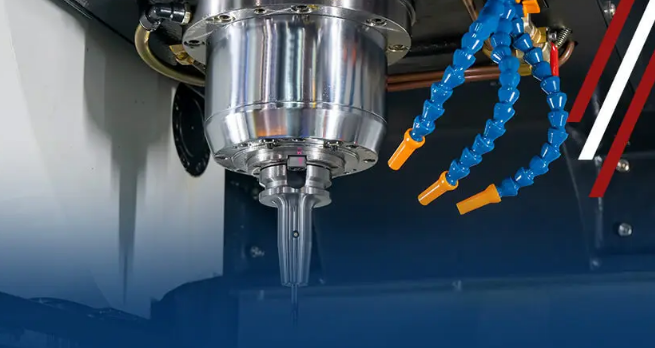
Repeatability
One of the main advantages of CNC machines is their incredibly high repeatability. Irrespective of the quantity, of the production run, every produced part will be aerodynamically identical to the previous one. It is extremely useful in such industries as automotive manufacturing where all engine blocks or dashboard panels produced should be identical to one another to perfectly fit every produced vehicle.
It is made possible by the CNC aspect that it follows the programmed sequence with pinpoint precision and control, minimizing the total amount of errors and differences as opposed to a manual machinist. Additionally, complex parts can be machined with dimensional tolerances that often exist within 0.0005 of an inch. Thus, such repeatability of CNC machines is an important aspect of their use in industries that require highly accurate and precise components.
As a second direct benefit of the repeatability and precision of parts produced using CNC, the production costs of manufacturers are similarly lowered. Other, less precise forms of manufacturing directly increase the number of quality control checks that should be made after the product is finished. In the case of electronic manufacturing, it is an incredibly important consideration since integrated circuits and circuit boards produced in such factories usually contain many small and precise features.
To meet their standards, each produced board must be identical to one another. Otherwise, errors caused in the production might require the manufacturer to sell scrap or require further accuracy saving operations. An example of an industry in which CNCs are regularly used is consumer electronics where millions of identical units should be produced. Overall, the repeatability and precision of CNC-produced parts in large production runs that require identically produced parts lead to reduced costs per unit and increased speed of production.
Complex Geometries
CNC machines inherently perform a function that is impossible or impossibly challenging with conventional machining methods: they produce parts with complex geometries. This capacity is a game-changer in many specific important applications, namely, in the aerospace and biomedical engineering sectors. Turbine blades that provide the thrust for aircraft engines are an example of the latter. They feature an intricate, aerodynamic shape and are generally very thin when compared to their length.
Thanks to CNC machining, they can be shaped out of a single piece of metal with the required precision of movement, with an error not exceeding 0.0001 inches. The result is that the engine runs at an efficiency high enough to allow an aircraft to reach high speeds, with the cloud’s height of around 10,000-45,000 feet and temperatures ranging from −30 °C to 70 °C. These factors significantly reduce the number of incidents caused by engine failure, making air travel safer.
Biomedical engineering is another field that benefits greatly from the application of the highly accurate CNC technology. Prosthetic limbs are among the products that previously were inferior to their modern iterations shaped by CNCs. To match the necessary anatomy of a person with a missing part, the healthcare professional now simply orders a product engineered to the necessary shape.
Furthermore, to enhance its application for this specific usage case, CNC has made it possible to craft bespoke hip replacements in a few days, which fit and work perfectly after the implantation. For example, the recoveries of three quarters of the patients who received custom hip replacements extended from 90 to 100 percent of their increased mobility. Finally, CNC-machined products can be used for applications intended for speed, such as the above-described aircraft engine and bicycles produced from high-performance composites. This is possible due to the many open design files that contain specifics on how to maximize the strength-to-weight ratio by improving the distribution of the reinforcing fiber.
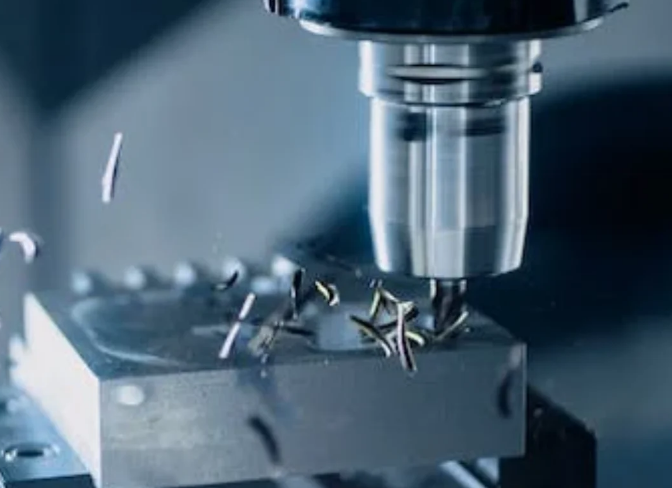
Reduced Error
One of the primary advantages offered by CNC machines is the fact that they reduce the margin for error in the products that they help manufacture. First and foremost, by definition, the use of such devices means the guiding of the mechanical processes by computer programs, thus controlling the production as closely as possible. The high degree of control allows for the elimination of human error and a uniform style across all products. It is, therefore, a valuable tool in big industries, where the precision in creation is particularly important – for example, the production of electronic devices or parts for aircraft.
When programming such a machine to make a circuit board, the computer calculates the measurements down to the width of the pathways and spaces between components. Because the pathway must then link certain components in particular places for the electronic item to function, whole parts of the electronic device are manufactured with a precision level of 0.0005 inches – a margin rarely achieved by a human engineer.
For example, lack of precision may lead to a component’s misalignment, rendering the entire board unfit for further use. This is particularly relevant to such finished goods as smartphones: a continual problem with even a single function in the device may reduce a whole batch of them to scrap, cause significant financial losses, and damage the manufacturer’s reputation. In car and airplane manufacture, where the parts must fit together with minimum tolerance error, the use of this technology enhances the performance and longevity of an engine.
The financial importance of reduced error is very significant. First and foremost, with minimized errors and waste, companies spend much less on materials and the need to re-sort them or rid them of a production process makes the savings tremendous. Even saving on a fraction of manufactured material is important; especially for branches of industry for which the production scale is high and the material costly – for example, the automotive industry, for which a 1% decrease in material waste may mean millions of dollars saved on expensive materials like steel or aluminum – and close to none on the cost of labor.
Fine Detailing
For fine detailing the components, CNC machines are the best way. The ability of these tools to handle complex patterns with high precision is useful in the jewelry industry. Here, detailed and smooth patterns must be made to increase the attractiveness of the items. To hand make such designs is difficult, and processing them with simple machines is impossible. Therefore, CNC machines can engrave complicated patterns in a platinum ring, for example, which will have a tolerance of 0.001 inches for the precision of the cut.
This will ensure that the width of each engraved curve will not differ from the average by more than the specified level. Therefore, the CNC machining of such details increases their attractiveness and market price. The fine detailing can also be beneficial for other sectors, where many small parts and connectors with unnecessarily small, precise details should be made. In particular, in the electronics industry, the small details consist of electronic appliances like laptops, computer motherboards, cell phones, and other gadgets.
For instance, cnc machine will make a perfect microprocessor, made up of large numbers of small precise parts. Each of them will have a specific function and will be securely connected to neighboring parts. The tightness of the connection will be also essential, as any gap can cause malfunction of the whole electronics. The same is true with small connectors that must fit their place with the highest precision. Such an approach increases a device’s life because its malfunction, no matter how small, can damage the entire device.
In CNC machining, the tools and machines should be precise and work with the highest precision down to a thousandth of an inch. Thanks to it, the electronics are precisely organized, and due to the fine detailing, each part perfectly fits its additional parts. The waste of material in this case will also be minimized, which is beneficial for the companies regarding costs. Overall, the CNC machines should be used for fine detailing because, each year, CNC machines become more and more precise, and this tendency will only grow.
Consistent Quality
CNC machines ensure consistent quality within the manufacturing process, and this quality is vital for the industries that require uniformity across large volumes of manufacturing. The first industry that benefits from this aspect is automotive, as the production of every engine component has to be exactly the same for every car. The aerospace sector requires even consistent quality due to the strenuous conditions under which aircraft operates.
CNC machining ensures consistent quality by controlling the entire manufacturing process with computer software. This results in manufacturing precision in tens or hundreds of thousandths of an inch, depending on the machine’s size and the programming. The level of precision that CNC machines provide would not be achievable with a manual manufacturing process. This process does not enable the volume of production that can be achieved with CNC machines.
In automotive production, CNC machines create parts like engine components and suspension systems without a level of precision achievable through manual machining. For example, one CNC machine could produce thousands of piston rings, ensuring that the diameter variance of every ring would be 0.0005 inches. These differences are crucial in every piston ring performing the same way and sealing the combustion chamber of a car’s motor equally well. The benefits are manifested in the performance, fuel efficiency, and emissions performance of the cars that use these components.
Every car that rolls off the assembly line meets the same standards, a benefit that would not be replicated with manual machining. The aerospace industry also benefits from this process, as the structural conditions and environmental hazards necessitate aircraft having the same-quality parts across manufacture. Wing spars and fuselage panels that are CNC machines to demanding tolerances as tight as 0.001 of an inch ensure the safety of flights and keep aeroplanes at the level of quality that regulatory variances demand. The consistent quality achieved with CNC machines ensures cost savings as well.
In this case, the variability has been reduced, thinning the requirement for defects and manufacture scrap. This process improves the manufacturing timeline and the longevity of the production line. The level of output is best observed in electronic component manufacturing, and in this sector, the ability to create large amounts of circuit boards due to minimal performance variance ensures that devices do not fail. Quality is assured for every single unit, and manufacturing is scalable and viable due to the levels of precision that CNC machines provide.


